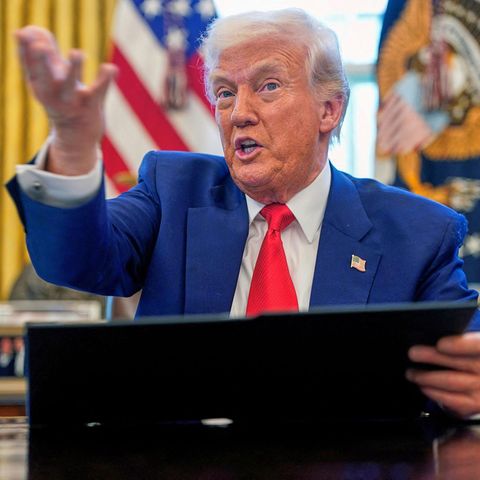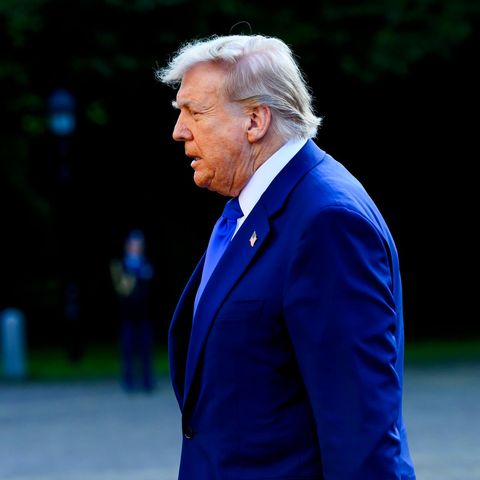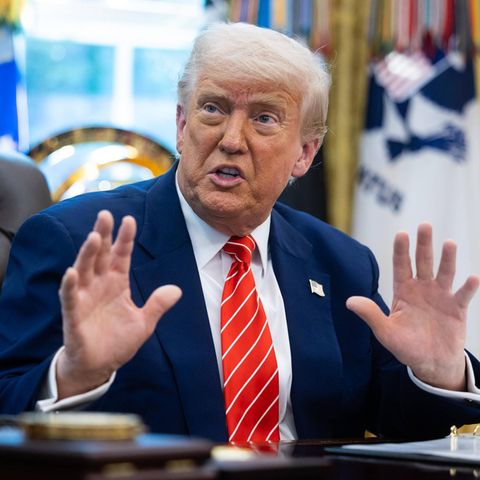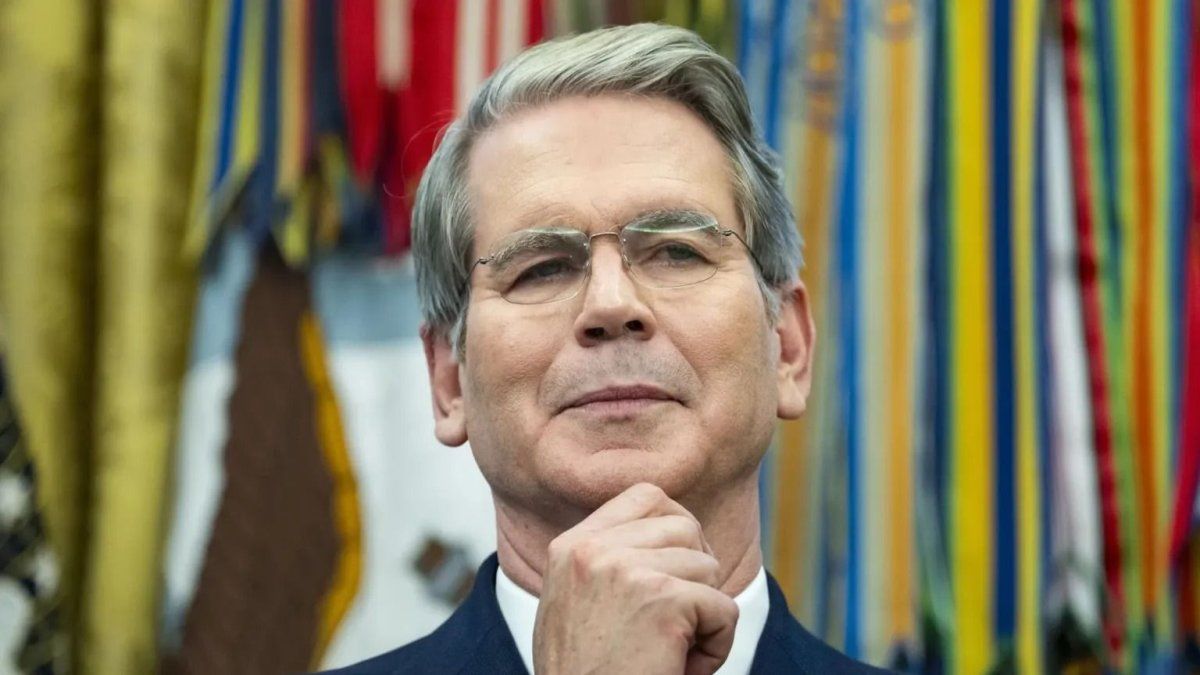Balance after six months
Threaten, deal, hit it: what Trump has achieved in the last six months
Copy the current link
Add to the memorial list
Donald Trump’s second term old is six months old. During this time, the US President appeared significantly brazen than before. But did that work? An intermediate balance.
Power gives threats weight. If you come from the mouth of US President Donald Trump, he can be sure that he is listened to. He often connects his threats to a deadline of a few weeks or months – and the demand for a deal.
The latest prominent case: Trump’s behavior towards Russia’s President Vladimir Putin. If there was no deal within 50 days of the end of the Russian war of aggression against Ukraine, the United States would raise high tariffs against Russia’s trading partners, Trump threatened last week. It remains to be seen whether he is going through this by then no agreement. It would not be the first postponed deadline.
In the first six months of Trump’s second presidency, this mixture of threats, deadlines and the urging on deals could be observed in very different contexts. How successful is the Republican with it? Three examples:
Donald Trump’s 90-day tense threat
Trump’s trade policy is probably the most obvious example that shows that deadlines can be flexible with him, just like his definition of a deal. At the beginning of April, Trump held a table in the camera in the rose garden of the White House. To be seen on it: so-called mutual tariffs against numerous countries with which the US government believes that the US government has a particularly large trade deficit.
This caused shock worldwide, and the stock exchanges went downhill. Trump then stopped at least these tariffs for the most part – for 90 days, as it was initially said. This break should be used for negotiations, Trump and his team saw themselves in a strong position: “They burn on making a deal. You say, please, please, do a deal, I do everything for a deal, sir ‘”said the president of countries affected by his tariffs, shortly before he announced the postponement. His economic advisor Peter Navarro held “90 deals in 90 days” for possible.
It became clear in the weeks after that it is not that easy. After 90 days there were only a few deals that, if at all, were more likely to have framework agreements than traditional trade agreements.
Shortly before the deadline passed, Trump simply postponed it by a good three weeks to the beginning of August – followed by new threats to trading partners in the form of customs letters. If he threatened the EU on his table in April with tariffs of 20 percent, so he went one step further in his letter – now it is about 30 percent. Trump recently described this increased threatening backdrop “deal”but also made it clear that the talks continue. Will there be a real deal in the end? Completely open.
Nuclear dispute with Iran
Trump’s behavior towards Iran can hardly be viewed in isolation from the allied Israel – which messages he sent to Tehran and the world, but already. They draw the image of a president who is serious with his threats if there is no deal until the deadline he set. In this public representation, it takes a back seat to whether everything actually happens exactly then and exactly as they wanted.
In April, the United States and Iran recovered talks after the Oman’s ice age. The goal: a new nuclear agreement. Previously, Trump had sent a letter to Iran’s highest leader Ali Chamenei and said hope that Iran would negotiate, “Because if we have to intervene militarily, it will be terrible”. According to media reports, the US President also set a two-month time frame for the negotiations.
Around two months after it started, another round of talks between Iran and the USA was actually planned, but that did not happen: Israel attacked Iran. Trump presented this on the Truth Social platform as a consequence of a lack of willingness to deal: two months ago, he provided the Iran an ultimatum of 60 days to make a deal, he wrote. “You should have done it! Today is day 61”.
A few days later, the United States attacked Iran’s three most important nuclear systems – and, according to Trump, destroyed it completely. However, there is still a question mark behind the actual extent of the damage. While Trump announced a ceasefire and the end of the twelve -day war between Israel and Iran, the deeper conflict is still unsolved. Trump announced talks again at the end of June. So far, however, no new negotiations between the United States and Iran have been known about its controversial nuclear program.
In any case, the question arises as to how serious Trump’s efforts are around a new atomic deal. Did he really think it was realistic to negotiate such an agreement within a few months? Years passed from the first negotiations to the end of the Vienna nuclear agreement to limit the Iranian nuclear program in 2015. In 2018, Trump unilaterally rose out of this deal – which was not of his – in his first term.
More success in the USA
Compared to abroad, Trump’s mix of threats and deadlines in Germany seems more effective. His greatest success in his second term in the US Congress so far: the adoption of the law that is under the name “One Big Beautiful Bill” ((“A large, beautiful law”) is known.
There were also reservations about the tax and expenditure law in their own ranks. But Trump always made it clear that he wants to have it on his desk until the independence day: “We are on schedule – let’s go and be ready before you and your family go on vacation on July 4th”for example, he was aimed at Truth social to the Republicans in the House of Representatives after the law had passed the Senate.
For weeks, the President repeatedly exerted pressure on congress members – with success: One day before the end of his deadline, the House of Representatives passed the law. Trump then said about his work on party colleagues: “What I did is – we talked about how good the law is. I mean, that’s a deal, I think when you think about it.”
Dpa
Franziska Spiecker / CL
Source: Stern
I have been working in the news industry for over 6 years, first as a reporter and now as an editor. I have covered politics extensively, and my work has appeared in major newspapers and online news outlets around the world. In addition to my writing, I also contribute regularly to 24 Hours World.







